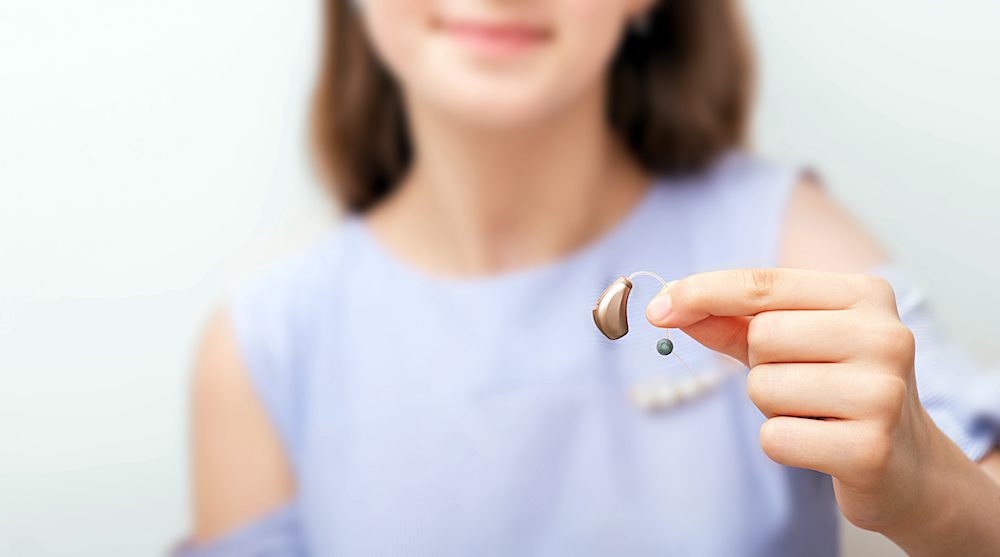The Impact of Hearing Loss on Job Performance and Career
Hearing loss can subtly influence various aspects of your life, including

By: admin | May 24, 2023
Millions of people all over the world experience hearing loss, which can range from mild to profound. Many people with damaged hearing have benefited greatly from advances in audiology – the branch of medicine and science that deals with hearing and ear-related conditions. Hearing aids, cochlear implants and assisted hearing devices have advanced dramatically in recent decades. This article will look at some of the most recent advancements in hearing technology.
Although hearing aid technology has advanced greatly in recent decades, the fundamental design has remained consistent. A conventional hearing aid comprises four components: a microphone, receiver, processor and power source. The microphone’s role is to pick up sounds in the environment and send them to the processor, which amplifies the signal. This signal is subsequently delivered to the ear canal by the receiver. A battery powers the whole process.
Hearing aids available now are vastly improved than those available a few years ago. Sleek design, reduced size, built-in rechargeable batteries, improved microphone technology and connectivity with Bluetooth-enabled devices. Better protection against wax, moisture and dust are some important characteristics in today’s hearing aids.
Today’s hearing aids can be individually personalized for an individual’s hearing loss. Those with significant hearing loss, for example, generally need a cochlear implant. When compared to hearing aids, the main advantage of a cochlear implant is that it can improve the capacity to hear and understand speech. Cochlear implants have recently advanced in technology, allowing children as young as nine months to use them.
Cochlear implant technology is continually evolving, and the best part is that the majority of advancements are housed in the processor, which is located on the device’s exterior. This means that patients who had cochlear transplant surgery a few years ago will have easy access to the majority of the most recent breakthroughs. Assistive listening devices are sometimes used in conjunction with hearing aids and cochlear implants to improve hearing.
Personal amplifiers, which are handheld amplifiers with a microphone that can enhance voices and noises, are one type of assistive listening devices. Assistive listening devices advancements have also included amplified phones, which have helped people hear voices on the phone.
Technology improvements have made hearing aids more automated and included several unique features that allow people with hearing loss to communicate with their environment through the use of vibrating gadgets or flashing lights. They have also been combined with things like smoke detectors, doorbells or alarm sounds.
Two hearing aids can now work together as a single system thanks to wireless technology. This is based on binaural processing, which mimics the ability of the brain to interpret information from both ears and reduce the need for human adjustments. The information transfer rate in wireless hearing aids is measured in nanoseconds, which is faster than the human brain’s detecting ability.
All hearing aids process sound, dividing it into bands of sounds and digitizing it before amplifying. A more modern hearing aid allows greater versatility in amplifying the range of sounds to meet individual demands.
For example, if a person solely experiences high-frequency hearing loss, an advanced hearing aid would only be able to amplify sounds in the high-frequency region. On the other hand, a lower-end form of hearing aid would amplify both mid-and high-frequency sounds regardless of the individual’s needs.
Bluetooth compatibility is a wireless capability that allows hearing aids to communicate with other devices, such as phones. Bluetooth technology has increased the signal-to-noise ratio and eliminated microphone feedback.
This wireless capability allows compatible phones to take up electromagnetic signals. The signal-to-noise ratio is significantly enhanced because the signals reach the hearing aid’s processor without microphones.
One of the most important features that determines whether a specific sound is unwanted is the digital noise reduction system. If an unpleasant noise is recognized, the amount of noise is reduced. As a result, this function has the potential to improve listening comfort. In the same vein, an impulse noise reduction system detects and softens transient loud noises, such as rattling or coins jangling. A wind noise reduction system can detect the impact of wind on hearing aid microphones and, as a result, does not magnify them.
To learn more about the latest advancements in hearing aid technology and to speak to an audiologist about anything to do with hearing loss or hearing aids, call Advanced Hearing of Brighton at 810-355-2245.
Tags: hearing aid technology

Hearing loss can subtly influence various aspects of your life, including
By: admin | February 28, 2024

Our understanding of hearing loss and its treatment with hearing aids has
By: admin | December 28, 2023

In industries where loud machinery is a constant presence, it’s
By: admin | November 25, 2023
